We may receive a commission when you use our affiliate links. However, this does not impact our recommendations.
If you’re considering making a sawhorse, sawing stool, saw bench or however you like to describe it, this pattern is worthy of consideration. Thanks to its very stable platform, economical use of timber, easy stacking and the chance to get your head around compound joinery, these appliances will be an asset in the shop. Last time I showed an option that would involve reshaping the legs or making housings with sloping shoulders, all solved with some geometry. However, there is a third way that suits the more practically minded like me and negates reshaping the legs or making tapered shouldered housings.
Making a pair of leg templates will help you to create the joinery required and visualize the project before any timber is wasted. I start by setting two sliding bevels to 20 degrees and cutting a left and right “mini leg” about 6″-8″ long, using the the bevel shown in the top of the picture above, to develop the lines around.
Then place these mini legs onto the board used to make the braces, hold the legs flush with the front of the board and draw around them. This will immediately show the issue you encounter with compound cut. The templates shown bottom right hopefully show this (bottom right perfect, bottom center no good). I know it might seem basic showing this, but unless you grasp this point before making these sawhorses, the braces just won’t register nicely when fitted, losing out on valuable glue and fixing area.
I then apply a square line across the templates making a 1/4″ inset at the narrowest point. I shade the area to be kept in and end grain hatching — small touches like that help keep you on track.
I apply all lines with pencil only and cut to the pencil lines on the entirety of this project. Although knife lines are useful on cuts of risk or show areas on more prestigious projects, pencil lines are easy to apply and fast to work with.
To obtain the depth of shoulder, sit the template next to the top and run the pencil along the top to strike a line. Because the pencil point is above the top, it will allow the cut to be slightly above for trimming down after glue up. Use the second bevel to mark the cheek.
I then use these templates to mark out the top. The final length of the top will be 30″ long, I allow extra to this for trimming to length later — often a prudent step on any project. I measure in 6″ in from the finished length on the top edge and line up the templates then draw around them. I set a marking gauge just a touch over 1/4″ and gauge the depth of the housing. Again sawing to the pencil lines and adding a few relief cuts, I then remove the waste with a chisel and level off with some paring cuts. As with any chisel work think of it as a loaded gun or the like, always keeping hands and body behind the line of fire!
Here are some supplies and tools we find essential in our everyday work around the shop. We may receive a commission from sales referred by our links; however, we have carefully selected these products for their usefulness and quality.



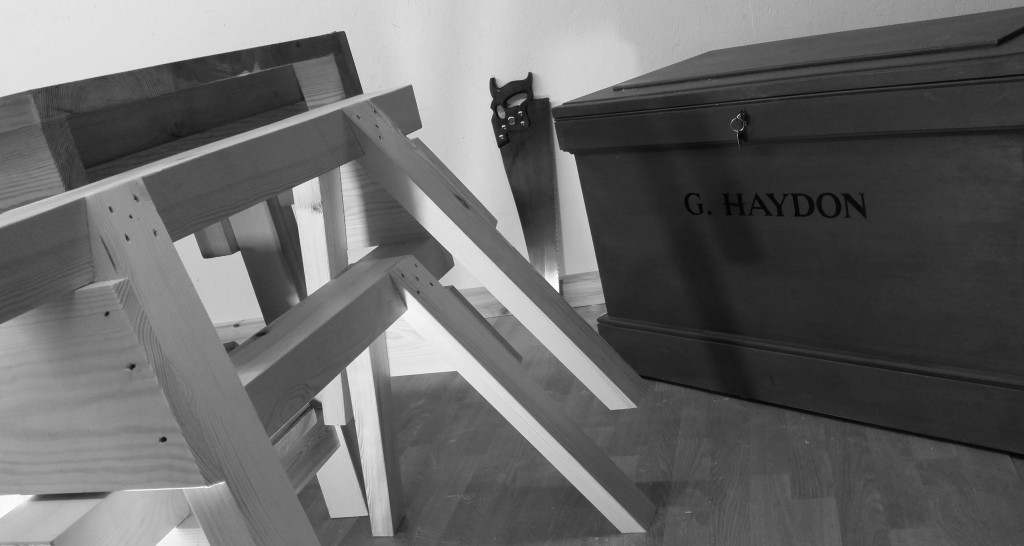
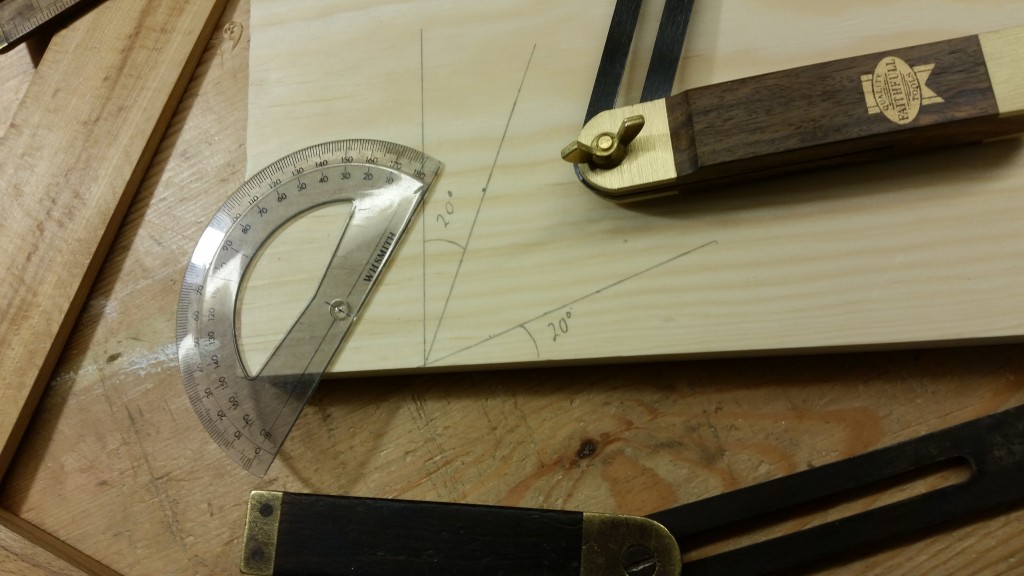
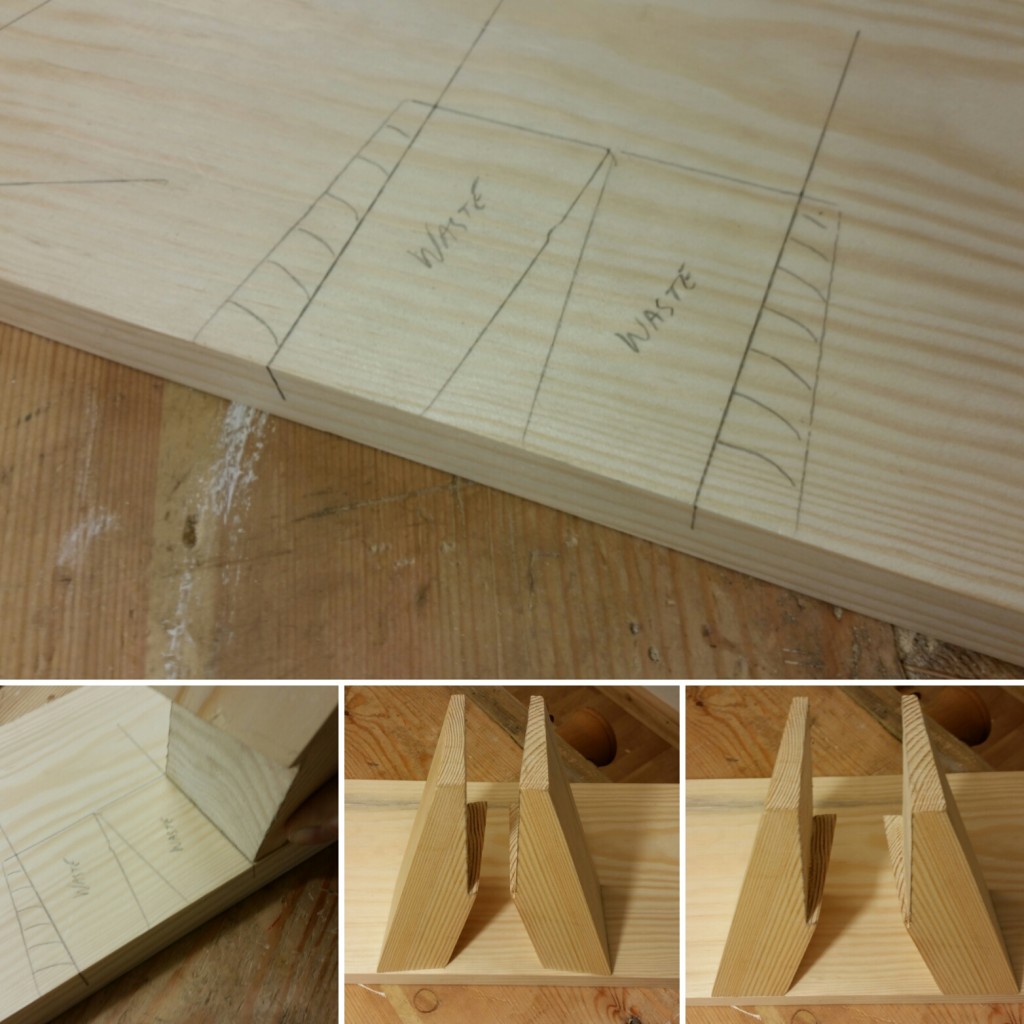
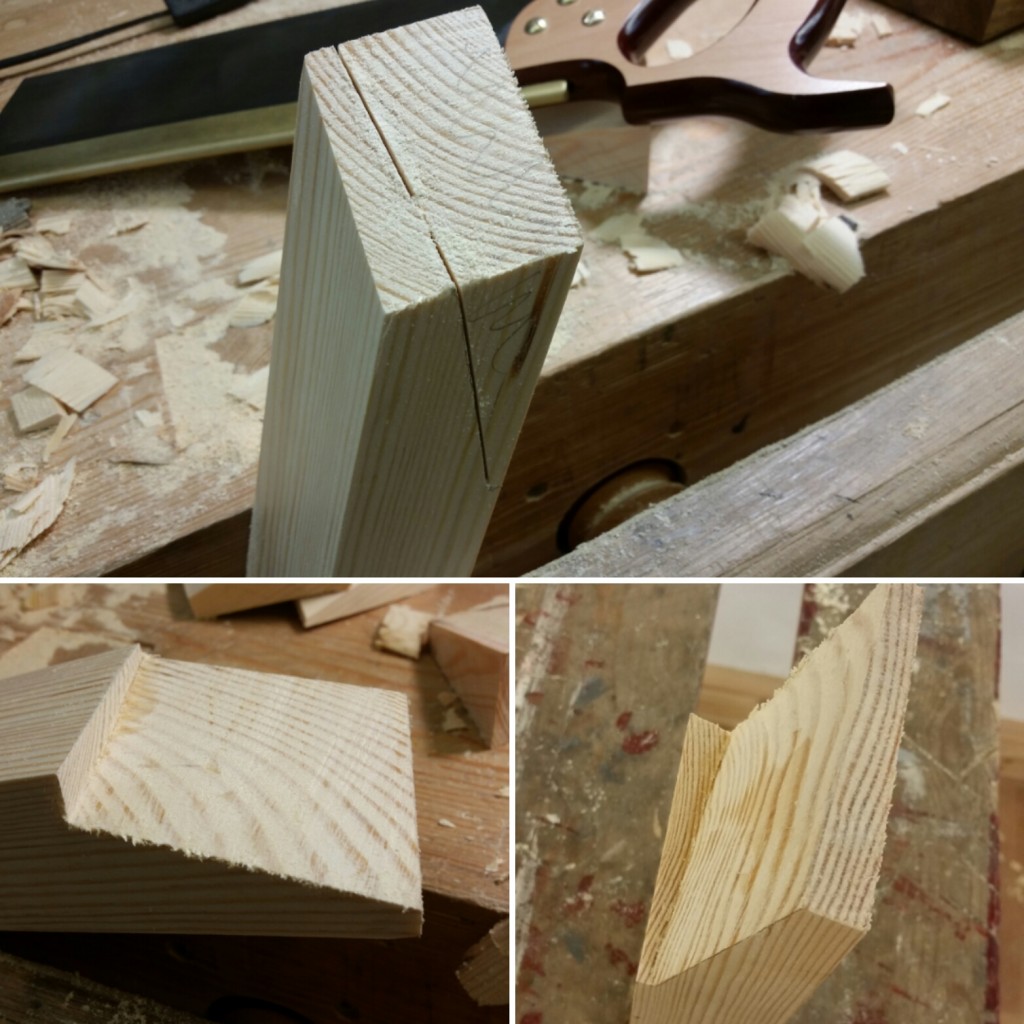
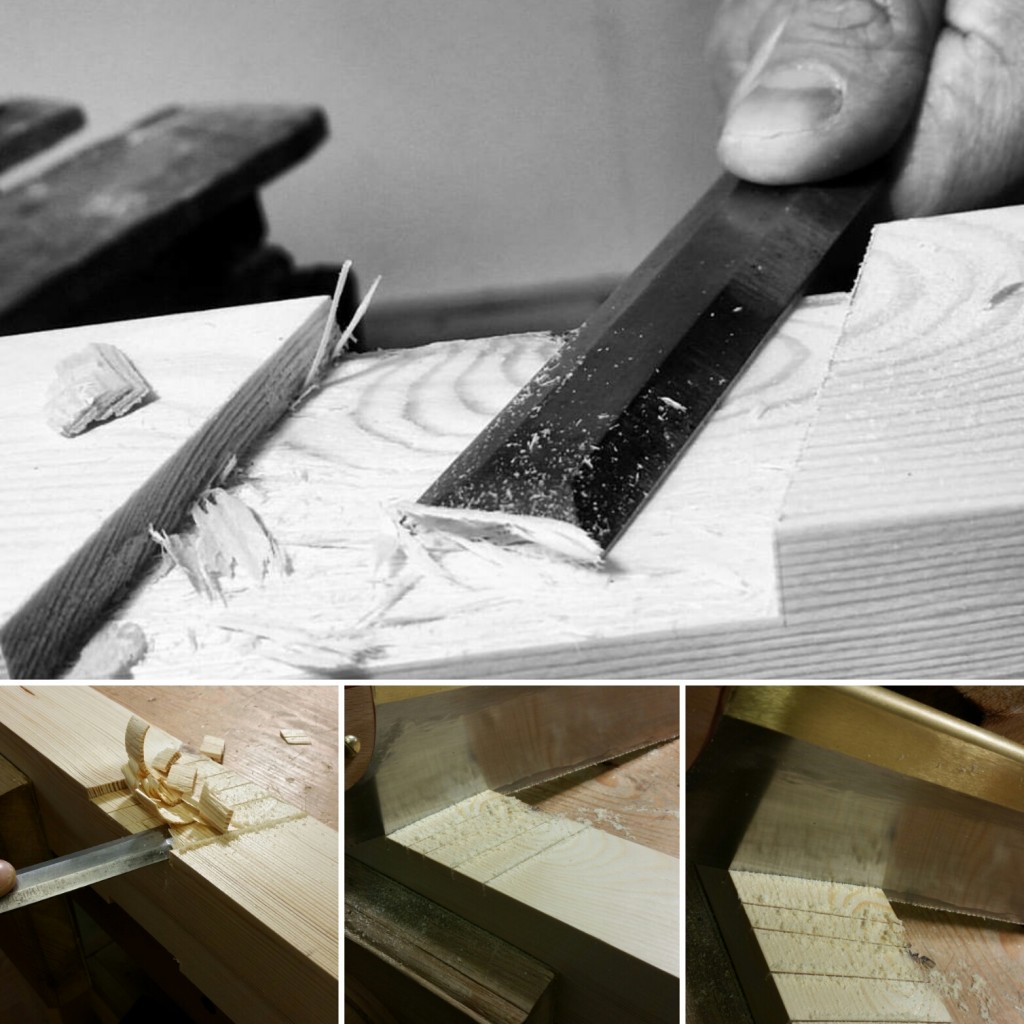




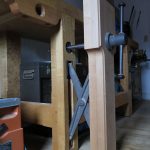
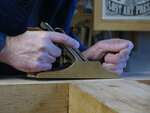
The reason again, please, for the splayed legs? I just don’t get why they aren’t just cut square.